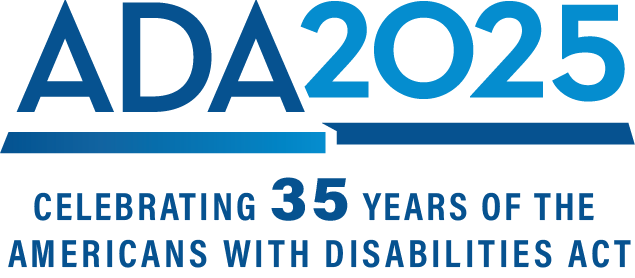Crafting the Law
When the 101st Congress convened in 1989, the disability rights community approached Senator Ted Kennedy and Carolyn Osolinik, his chief counsel, to introduce a new version of the proposed ADA, one that would fulfill the promise of NCD's report and that would carry out President Bush’s election campaign promise. The disability rights community knew that the bill would have to be scaled down from what opponents called the 1988 “flatten the earth” proposal to have the best chance of becoming law.
Patrisha Wright, co-founder of the Disability Rights Education and Defense Fund (DREDF), took the lead for the disability community and assembled a formidable team to support passage. She sought out Ralph Neas of the Leadership Conference on Civil Rights to oversee passage of the bill with her. She asked Liz Savage, then of the Epilepsy Foundation, to coordinate the coalition’s Capitol Hill lobbying effort. Marilyn Golden, also of DREDF, took on the work of a nationwide grassroots organizing effort. They were assisted by disability rights advocates such as Paul Marchand, Bob Williams, Becky Ogle, David Capozzi, Scott Marshall, Dana Jackson, Bob Kafka, Wade Blank, and Mark Johnson, among many others.
Wright and Neas also relied upon a legal brain trust for the disability community, including Arlene Mayerson, the directing attorney from DREDF; Chai Feldblum of the ACLU AIDS Project; Jim Weisman of the Eastern Paralyzed Veterans Association (now the United Spinal Association); Bonnie Milstein of the Bazelon Center for Mental Health Law; and Karen Peltz Strauss of the National Center for Law and the Deaf. They worked with a think tank of disability rights advocates, leaders, and social scientists, including Mary Lou Breslin, Bob Williams, Marca Bristo, Tom Sheridan, and Karen Friedman.
A civil rights bill of this nature fell under the jurisdiction of the Senate Committee on Labor and Human Resources. Senator Kennedy was the chair of the committee, and Senator Harkin was the new chair of the subcommittee on disability. Wright approached Bobby Silverstein, the chief legislative aide to Senator Harkin, and Carolyn Osolinik, Senator Kennedy’s chief counsel. These two senators and their staff took the lead in creating the bill's language, carefully tailoring it to preserve effective civil rights protections while increasing chances for passage.
As the Senate staff began work on a new bill and held a set of hearings before the Senate Committee on Labor and Human Resources, the Committee reached out to President Bush to seek the administration’s views and support. In addition, the community reached out to Senator Robert Dole, then minority leader of the Senate; Maureen West, one of Senator Dole's chief aides; and Senator Orrin Hatch to build Republican support in the Senate.
When Senator Harkin sent a draft proposed bill to the White House for review, the Bush administration began its assessment. Because the bill was so comprehensive, it was the subject of discussions among many players: William Roper, who headed the HHS Health Care Financing Administration and later became head of the CDC; the Domestic Policy Council; the White House Office of Management and Budget; John Sununu, the president’s chief of staff; Boyden Gray, chief White House counsel; and the departments of Transportation and Justice.
There were considerable concerns that the proposed bill went too far, was too costly, and would need to be scaled back in its coverage and requirements. Some in the administration drafted a less far-reaching bill. After months of discussions, Attorney General Richard Thornburgh announced the administration’s position at the Senate hearing on the bill on June 22, 1989. He voiced agreement on the principles of the comprehensive legislation, expressed concern over some of the bill’s provisions, and agreed to negotiate to reach an agreement on a final bill. The administration’s concerns included the scope of remedies allowed, the reach of the public accommodations provisions, and the potential financial impact on small businesses.
During the summer of 1989, intense discussions continued on the bill's language, and Senators Harkin, Kennedy, and Hatch sought ways to achieve consensus. The disability community was adamant that they would compromise no further than the changes to the 1988 bill they had already accepted, but the administration's concerns persisted. Finally, a grand consensus was reached, with significant concessions from both sides: the enforcement scheme and remedies would parallel those of the Civil Rights Act of 1964, the scope of public accommodations would be broad, and very small buildings would not require installation of an elevator. The compromise included broad coverage of private entities serving the general public, called public accommodations, including all individual health care providers in the United States, regardless of their size.
In September 1989, four months after it was introduced, the bill passed the Senate 76-8, with 16 Senators “not present.”

